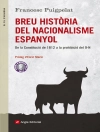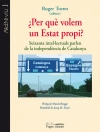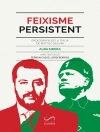This meticulously edited collection presents to you the life and works of President Woodrow Wilson.
Content:
Essays:
The New Freedom
When A Man Comes To Himself
The Study of Administration
Leaders of Men
The New Democracy
Inaugural Addresses:
First Inaugural Address
Second Inaugural Address
State of the Union Addresses:
First State of the Union address
Second State of the Union address
Third State of the Union address
Fourth State of the Union address
Fifth State of the Union address
Sixth State of the Union address
Seventh State of the Union address
Eighth State of the Union address
Speeches & Addresses:
First Address to Congress
Address on the Banking System
Address at Gettysburg
Address on Mexican Affairs
Understanding America
Address before the Southern Commercial Congress
Trusts and Monopolies
Panama Canal Tolls
The Tampico Incident
In the Firmament of Memory
Memorial Day Address at Arlington
Closing a Chapter
Annapolis Commencement Address
The Meaning of Liberty
American Neutrality
Appeal for Additional Revenue
The Opinion of the World
The Power of Christian Young Men
A Message
Address before the United States Chamber of Commerce
To Naturalized Citizens
Address at Milwaukee
The Submarine Question
American Principles
The Demands of Railway Employees
Speech of Acceptance
Lincoln’s Beginnings
The Triumph of Women’s Suffrage
The Terms of Peace
Meeting Germany’s Challenge
Request for Authority
The Call to War
To the Country
The German Plot
Reply to the Pope
Labor must be Free
The Call for War with Austria-Hungary
Government Administration of Railways
The Conditions of Peace
Force to the Utmost
Presidential Decisions:
The State of War: The President’s Proclamation of April 6, 1917. (8a)
Formal U.S. Declaration of War with Germany, 6 April 1917 (8b)
A propos de l’auteur
Thomas Woodrow Wilson (1856-1924) was an American statesman and academic who served as the 28th President of the United States from 1913 to 1921. A member of the Democratic Party, Wilson served as the President of Princeton University from 1902 to 1910, and as Governor of New Jersey from 1911 to 1913, before winning the 1912 presidential election. As president, he oversaw the passage of progressive legislative policies unparalleled until the New Deal in 1933. He also led the United States during World War I. He was one of the three key leaders at the 1919 Paris Peace Conference, where he championed a new League of Nations.












